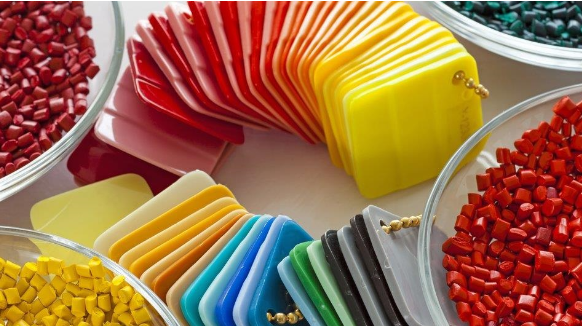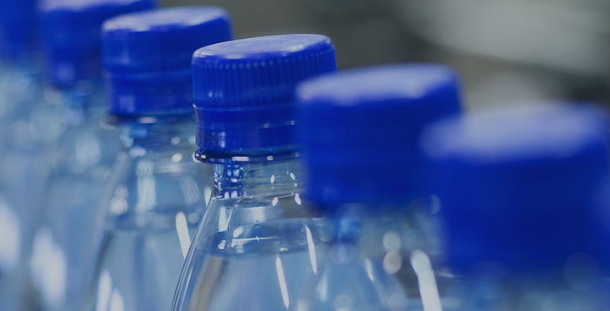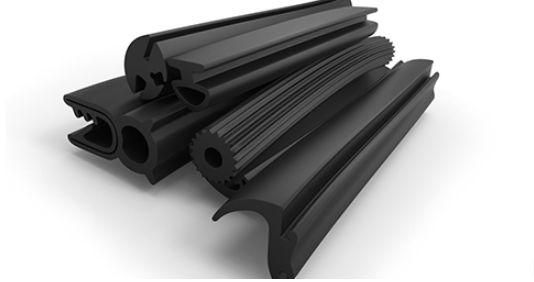Plastic fabrication methods include extrusion, injection molding, thermoforming, blow molding, and rotational molding.

Extrusion
Extrusion is a popular method in plastic fabrication, involving the pushing of molten plastic through a die to create long, continuous shapes with a consistent cross-section. This process suits a variety of materials, including but not limited to polyethylene, PVC, and ABS.
Process Overview
In extrusion, manufacturers first heat the plastic material to its specific melting point. The molten plastic then passes through a screw mechanism inside a heated barrel. This screw pushes the plastic towards and through a die, shaping it into the desired profile. The shaped plastic cools and solidifies, maintaining the profile as it exits the machine.
The speed of the screw and the design of the die determine the shape and dimensions of the extruded part. For intricate profiles, manufacturers may use custom-designed dies. The extrusion process boasts high efficiency and cost-effectiveness, especially for producing high volumes. Typical extrusion speeds vary, but some high-speed extruders can reach speeds up to 1,000 feet per minute, optimizing production time.
Applications and Examples
Extrusion serves a vast range of applications across various industries. Common uses include:
- Piping and Tubing: PVC pipes, used for plumbing and electrical conduits, exemplify the utility of extrusion in producing long, hollow shapes. The durability and quality of these pipes depend significantly on the precision of the extrusion process and the properties of the material used.
- Profiles: Extrusion creates profiles for window frames, door frames, and railing systems. The extruded plastic in these cases often needs specific characteristics like UV resistance or impact resistance.
- Sheet and Film Extrusion: Used in packaging, these films can vary in thickness and strength, with parameters adjusted during the extrusion process.
Plastic extrusion, being a high-volume manufacturing method, plays a pivotal role in cost-effectiveness and efficiency. However, the initial setup costs, including the cost of dies and machinery, can be significant. The quality of the extruded product also relies on maintaining consistent processing conditions, such as temperature control and screw speed.
Injection Molding
Injection molding is a leading technique in manufacturing high volumes of plastic parts with excellent precision. It involves injecting molten plastic into a mold where it cools and solidifies into the final part.
Basic Principles
The process starts with feeding plastic pellets into a heated barrel, where a rotating screw melts the pellets. This screw also acts as a plunger, injecting the molten plastic into a closed, clamped mold. The plastic cools and solidifies inside the mold, forming the desired shape. The mold then opens, and an ejector system removes the finished part.
Key parameters like temperature, pressure, and cooling time play crucial roles in determining the quality of the finished product. For instance, the temperature typically ranges from 200°C to 300°C depending on the plastic material. The injection pressure can vary from 35 to 140 MPa, ensuring the material fills the entire mold cavity.
Advantages and Limitations
Advantages:
- High Production Speed: Injection molding machines can produce parts at high speeds, often in a matter of seconds per cycle. This efficiency makes the process ideal for large-scale production.
- Complex Part Design: The technique can create parts with intricate geometries and fine details.
- High Efficiency: With proper tool design, scrap rates are typically low, and excess material can often be re-used, improving overall material efficiency.
Limitations:
- High Initial Costs: The cost of the mold and the molding machine can be substantial. For small runs, this can significantly increase the per-part cost. Mold costs can range from a few thousand to hundreds of thousands of dollars depending on complexity and size.
- Design Restrictions: While injection molding is versatile, certain design constraints exist, such as uniform wall thickness and draft angles, to facilitate easy ejection from the mold.
- Lead Time: Manufacturing and preparing molds can be time-consuming, potentially delaying project timelines.
Materials Suitable for Injection Molding
Various plastics are suitable for injection molding, each offering different characteristics:
- Polyethylene (PE): Widely used for its flexibility and toughness. Available in various densities, it’s common in containers, bottles, and plastic bags.
- Polypropylene (PP): Known for its chemical resistance and elasticity, PP is often used in automotive parts, containers, and living hinges.
- Polystyrene (PS): This material offers a good balance of stiffness and moldability, commonly seen in disposable cutlery and CD cases.
- ABS (Acrylonitrile Butadiene Styrene): Known for its toughness and impact resistance, ABS is prevalent in automotive components, toys, and consumer electronics.
Selecting the right material is crucial for balancing cost, mechanical properties, and the intended use of the final product. For example, while PE provides excellent impact resistance and flexibility, its lower melting point might not suit high-temperature applications. Similarly, ABS offers great strength and surface finish but at a higher cost compared to PP.
Blow Molding
Blow molding is a specialized method for creating hollow plastic parts by inflating a heated plastic tube, known as a parison, inside a mold. This technique is particularly famous for producing bottles, containers, and other similar products.
Process Description
In blow molding, manufacturers first extrude a warm plastic parison into a mold. They then close the mold and introduce air, inflating the parison to conform to the mold’s shape. After cooling and hardening, they open the mold to release the finished product. Key parameters like air pressure, mold temperature, and cooling time significantly impact the product’s quality. Air pressure, for instance, typically ranges from 25 to 150 psi, depending on the material and product size.
Applications in Industry
- Bottles and Containers: This is the most common application, ranging from small cosmetic bottles to large water containers.
- Fuel Tanks: Blow molding allows for the manufacture of complex shapes like automotive fuel tanks, thanks to its ability to form seamless parts.
- Technical Parts: Used in manufacturing parts that require controlled wall thickness and intricate shapes, such as ducts and hollow industrial parts.

Rotational Molding
Rotational molding, also known as rotomolding, involves creating hollow parts by rotating a heated mold filled with plastic powder around two perpendicular axes.
Methodology
Manufacturers fill a mold with a predetermined quantity of plastic powder and then heat it while rotating along two axes. The plastic melts and coats the inside of the mold, forming the hollow part. After the part cools and solidifies, they remove it from the mold. The slow rotation during heating and cooling ensures uniform thickness and smooth surfaces. The process offers flexibility in size and design, capable of producing large items like storage tanks and intricate parts like toys.
Comparisons with Other Molding Techniques
- Versus Injection Molding: Rotomolding is more suited for large, hollow parts and allows for more significant design freedom, but it typically has longer cycle times compared to injection molding.
- Versus Blow Molding: While both methods are for hollow parts, rotomolding offers better uniformity in wall thickness and allows for larger and more complex geometries. However, blow molding is faster and more cost-effective for high-volume production like bottles.
- Versus Extrusion: Rotomolding excels over extrusion when it comes to manufacturing large, hollow parts with complex shapes and excellent surface finishes. Extrusion, on the other hand, is ideal for long, continuous profiles and typically offers higher production speeds.
Rotational Molding
Rotational Molding, often called rotomolding, is a manufacturing process ideal for producing large, hollow and seamless plastic items. This method stands out for its design flexibility, allowing for complex shapes and a variety of sizes, which makes it a popular choice for creating tanks, toys, leisure equipment, and more.
Methodology
The process of rotational molding involves placing plastic powder inside a mold, which then heats up in an oven while rotating simultaneously around two axes. This rotation ensures the plastic melts and coats the entire interior surface of the mold evenly, creating uniform wall thickness throughout the part. Once the heating cycle completes, the mold moves to a cooling chamber where it continues to rotate, ensuring that the part maintains its shape and solidity as it cools.
A critical aspect of rotomolding is the selection of material and control of heating and cooling cycles. Manufacturers commonly use polyethylene due to its flow characteristics and durability. The time required for a typical rotational molding cycle can range from 20 minutes to several hours, depending on the size and thickness of the part. This longer cycle time is a trade-off for the process’s capability to create large, detailed parts with consistent quality.
Comparisons with Other Molding Techniques
Versus Injection Molding and Blow Molding:
- Flexibility in Design: Rotomolding allows for more complex shapes and larger sizes compared to injection molding and blow molding. For example, a large water tank or intricate children’s playhouse are more feasible with rotomolding.
- Wall Thickness: Rotational molding provides uniform wall thickness and more material strength in the corners where stress is typically concentrated. In contrast, blow molding might result in thinner walls in certain areas due to stretching of the material.
- Cost Effectiveness for Small Runs: For small production runs, rotomolding is more cost-effective than injection molding, as the latter involves higher mold and machinery costs. The cost of a rotational mold can be significantly lower, making it a better choice for limited production quantities or large, bulky items.
Versus Extrusion:
- Part Size and Complexity: Rotational molding is more suitable for producing large, hollow items like tanks and kayaks, which are challenging to manufacture with extrusion.
- Surface Finish and Detail: Rotomolding offers a superior surface finish and can incorporate intricate features, logos, and textures directly from the mold, a capability that is limited in extrusion

Thermoforming
Thermoforming is a versatile and popular method of processing plastic materials where a plastic sheet gets heated to a pliable forming temperature, formed to a specific shape in a mold, and trimmed to create a usable product. This method is highly efficient for producing large quantities of products such as packaging, automotive parts, and more.
Process Steps
- Heating: The first step in the thermoforming process is heating the plastic sheet to the desired, pliable temperature. Precise control of the heating element is crucial to ensure uniform temperature distribution across the sheet, which is typically in the range of 300°F to 400°F, though this can vary based on the material.
- Forming: Once the sheet reaches the correct temperature, manufacturers quickly transfer it to the mold. They then use one of several techniques (like vacuum forming or pressure forming) to shape the sheet to the mold’s contours.
- Cooling and Trimming: After forming, the plastic must cool and solidify into its new shape. Cooling typically involves fans or sprayed mist. The final step involves trimming the formed plastic to create a finished product, with excess material typically recycled for future use.
Types of Thermoforming: Vacuum Forming, Pressure Forming, etc.
Vacuum Forming:
- In vacuum forming, manufacturers stretch the heated plastic sheet over a mold. They then apply a vacuum to suck the air out from between the sheet and the mold, forcing the sheet to conform to the mold. This technique is suitable for simpler shapes and can be very cost-effective for lower-volume production.
Pressure Forming:
- Pressure forming involves applying positive air pressure on the opposite side of the sheet to push the material into the mold. This method allows for greater detail and texture on the formed part and is generally used for higher-end products where quality and precision are critical.
Drape Forming, Free Forming, and Mechanical Forming:
- Other techniques like drape forming, free forming, and mechanical forming vary in the way they apply force to the sheet to shape it against the mold. These methods offer different balances of cost, precision, and suitability for various shapes and sizes.




